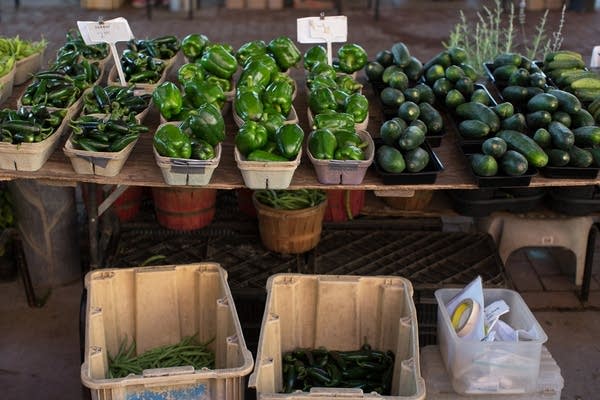Appetites: Hmong cuisine, 'the ultimate fusion food'

Go Deeper.
Create an account or log in to save stories.
Like this?
Thanks for liking this story! We have added it to a list of your favorite stories.
Pho, larb, papaya salad, khaub poob: Hmong cuisine is the "ultimate fusion food."
Pakou Hang, co-founder and executive director of the Hmong American Farmers Association, suggests just that as she shares five things you might not have known about Hmong food and farming in Minnesota.
The first Hmong refugees began arriving in Minnesota 40 years ago. Today, the Twin Cities metro area is home to the largest urban population of Hmong people in the country.

Turn Up Your Support
MPR News helps you turn down the noise and build shared understanding. Turn up your support for this public resource and keep trusted journalism accessible to all.
It's no accident there are so many Hmong farmers at the Twin Cities' many farmers markets.
Hang said researchers from the University of Minnesota Extension reached out in the early 1980s to new Hmong refugees who had begun arriving in the state. They knew the Hmong people had an agricultural background, so they contacted managers at local markets and did some "matchmaking," Hang said.
Even though the climates are very different, Hmong farmers can grow a lot of the same vegetables in Minnesota that they did in Laos.
The growing season here is shorter, too, but Hmong staples like bok choy and some the mustard greens can all grow here.
Hmong cuisine is the "ultimate fusion food."
The Hmong are members of an ethnic group that have not had a country of their own. For thousands of years, the Hmong lived in southwestern China. But when the Chinese began limiting their freedom in the mid-1600s, many migrated to Laos, Thailand and other neighboring countries.

Because the Hmong people were often poor, Hang said, their cuisine was simple.
The traditional Hmong meal included rice, some type of protein, a vegetable, another vegetable in some type of broth and a chili sauce. There weren't a lot of spices or flavor available, so they incorporated a lot of flavors and ingredients from the cultures of the people surrounding them.
Hmong families in Minnesota continue with that fusion.
During the holidays, Hang said, Hmong families will have turkey, which is something they never would have eaten in Laos.
Hmong farmers in Laos grew a different strain of sweet potato than is common in Minnesota, but here, it's not uncommon for families to add marshmallows to their otherwise traditional holiday sweet potatoes.
Sweet desserts aren't really a part of Hmong cuisine.
The Hmong in Laos were subsistence farmers and were very poor, so pastries or sweet desserts weren't something they made. They grew and ate fruit and sugarcane to add some sweetness to their diets.


